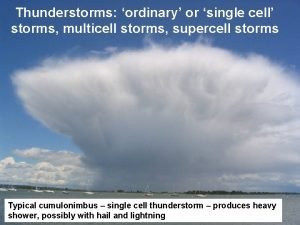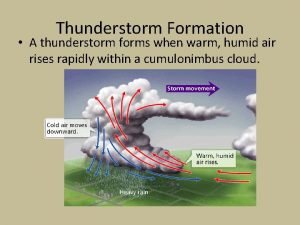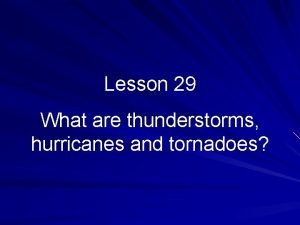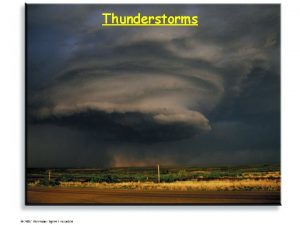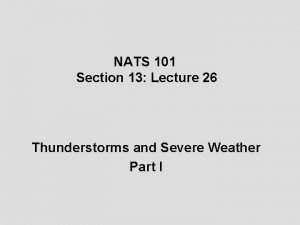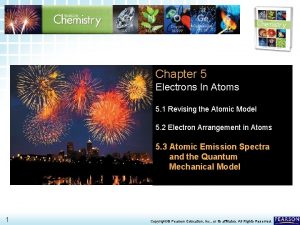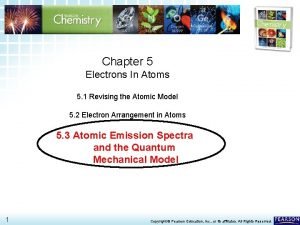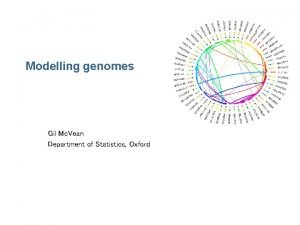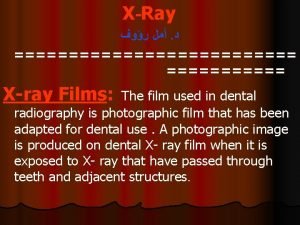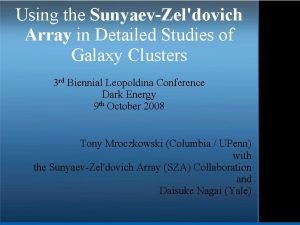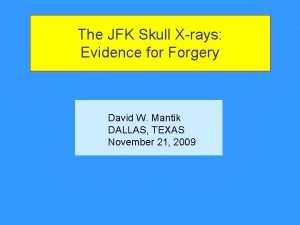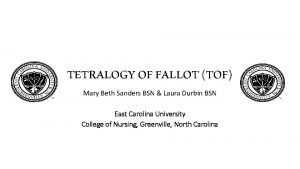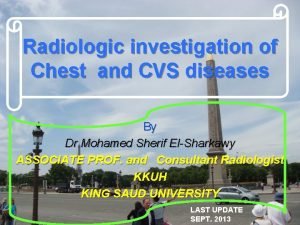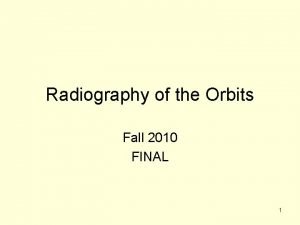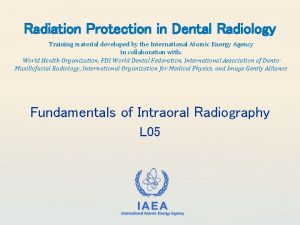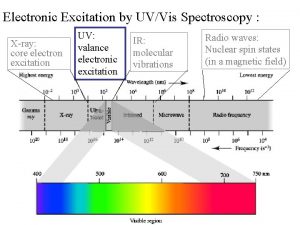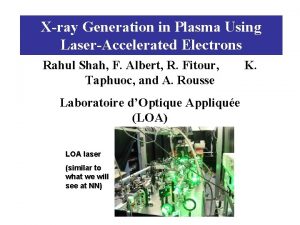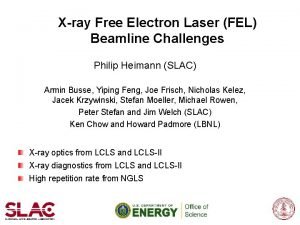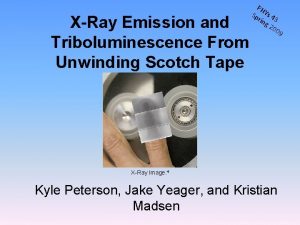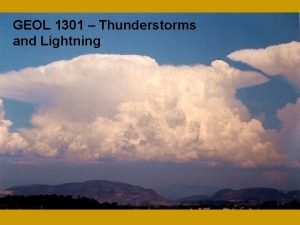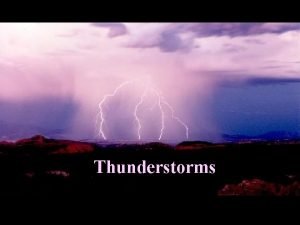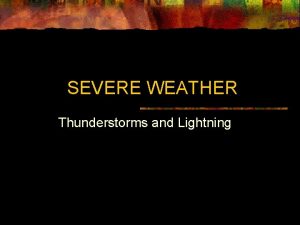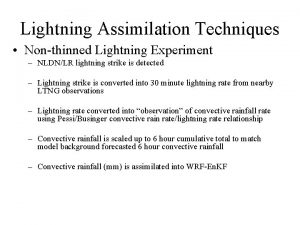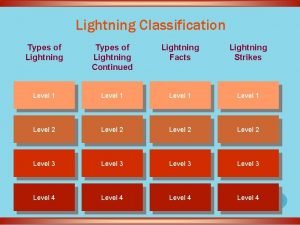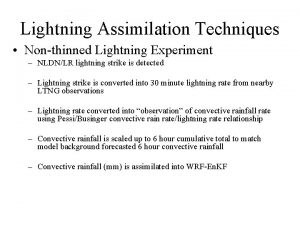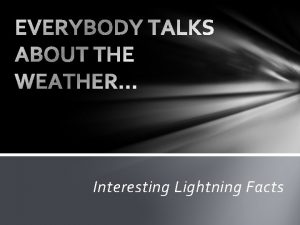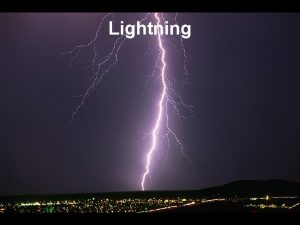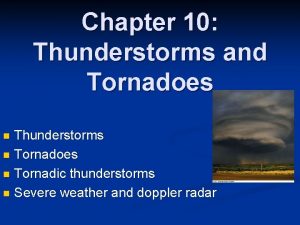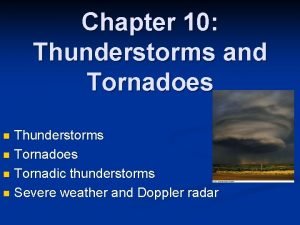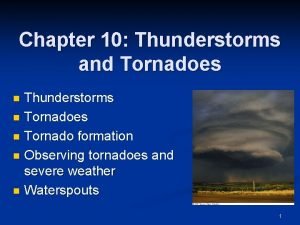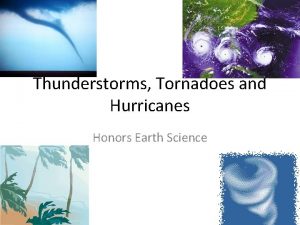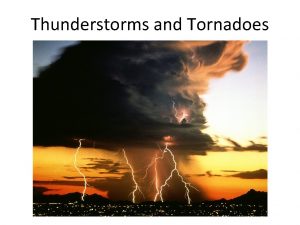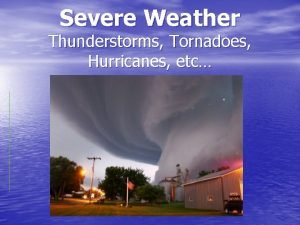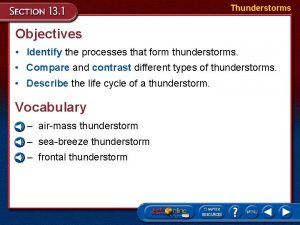Xray Emission from Thunderstorms and Lightning Joseph R
















































- Slides: 48

X-ray Emission from Thunderstorms and Lightning Joseph R. Dwyer Department of Physics and Space Sciences Florida Institute of Technology

People currently involved in this research J. Dwyer, Z. Saleh, D. Barnes, E. Cramer, M. Schaal, S. Lazarus, M. Splitt, and H. Rassoul Florida Institute of Technology M. Uman and V. Rakov University of Florida, Gainesville D. Smith University of California at Santa Cruz

Lightning facts • • • Lightning strikes the Earth about 4 million times every day. Lightning costs the US about $4 -5 billion per year in losses and damages. Every year lightning kills about 100 people in the US alone, more than hurricanes or tornados.

Lightning 101

Despite its familiarity, lightning remains a mystery • Big question #1: What microphysical processes are responsible for thunderstorm electrification? • Big question #2: How does lightning get started with the relatively low electric field strengths inside thunderstorms? • Big question #3: How does lightning travel through tens of kilometers of air?

Since we are still struggling to understand how lightning works 250 years after Franklin’s kite experiment, perhaps we are missing something important…. Runaway Electrons

25 Me. V electron moving through air at 1 atm

25 Me. V electron moving through air at 1 atm in a 3 k. V/cm electric field

Energy loss and gain experienced by an electron in air

Extensive air showers trigger lightning? For a typical thunderstorm electric field ~ 100 m. = Runaway electron avalanche (e-folding) length If the high field region has a depth of 2000 m then exp(20) ~ 108 runaway electrons are produced for each energetic seed particle An extensive air shower with 107 particles passing through such a thunderstorm would produce 1015 relativistic electrons and many more low energy electrons Maybe extensive air showers and runaway breakdown initiate lightning The average energy of runaway electrons is 7 Me. V The runaway breakdown threshold electric field Eth = 284 k. V/m at STP

Relativistic Breakdown due to x-ray and positron feedback. The central avalanche is due to the injection of a single, 1 Me. V seed electron. All the other avalanches are produced by x-ray and positron feedback. The top panel is for times, t < 0. 5 s. The middle panel is for t < 2 s, and the bottom panel is for t < 10 s.

Relativistic Breakdown limits the electric field that can be achieved in air and prevent large avalanche multiplication

Does runaway breakdown actually occur? One signature of runaway breakdown is x-ray emission. Many researchers have searched for such x-rays associated with thunderstorms and lightning. Experiment Location X-rays in thunderstorms? X-rays in lightning? Appleton & Bowen (1933) ground No No Macky (1934) balloon No No Clay et al. (1952) ground Yes No Hill (1963) 300 m tower No No Mc. Carthy & Parks (1985) aircraft Yes No Fishman et al. (1994) space Yes (sprites? ) No Moore et al. (2001) mountain (3288 m) No Yes

Rocket-triggered lightning

Instrument used to measure x-rays from lightning at the UF/Florida Tech International Center for Lightning Research and Testing (ICLRT) at Camp Blanding, FL

X-ray instruments in front of rocket launch tower used to trigger lightning


Triggering lightning Method 2

Rocket-triggered lightning

Rocket-triggered lightning

Rocket-triggered lightning

Rocket Triggered Lightning -- slow motion

Rocket Triggered Lightning—slow motion

X-rays from rocket-triggered lightning dart leaders


Energy of x-rays from triggered lightning

X-rays from natural cloud-to-ground lightning

TERA at the UF/Florida Tech International Center for Lightning Research and Testing (ICLRT) at Camp Blanding, FL

TERA Instrument Design

TERA instrument

TERA locations

X-rays from triggered lightning using TERA

Detector response fits to x-ray pulse from lightning

Radial fall-off of the x-rays from the triggered lightning channel

Schematic of Monte Carlo simulation

Model fits to x-ray data for different runaway electron energies

Best model fit to x-ray data

Model fits to x-ray data for different lightning leader altitudes

Energetic electron luminosity from lightning (electrons/sec)

A ground level gamma-ray flash observed during the initial stage of rocket-triggered lightning

CGRO/BATSE Terrestrial Gamma-ray Flash (TGF)

Terrestrial Gamma-Ray Flash (TGF) spectrum and results of Monte Carlo simulation for different source altitudes

Monte Carlo simulation showing runaway electron trajectories, injected by lightning, inside a thundercloud at 5 km altitude.

The effective dose produced by one lightning leader inside a thundercloud and a TGF versus the radius of the energetic electron beam.

Future Work: Schematic of XL-cam

Illustration of XL-Cam

Simulated movie of lightning made with x-rays. 25 microsecond of data shown. The lightning leader channel from a high speed optical camera is superimposed. For this simulation the emission is assumed to come from the bottom of the newly formed leader segment.

Conclusions • Lightning is not simply a conventional discharge. • It involves an exotic kind of discharge called runaway breakdown, during which electrons are accelerated to nearly the speed of light and large numbers of x-rays are created. • Since the standard models of lightning do not include runaway breakdown nor do they predict x-ray emission, clearly we need to revisit these models. • How lightning works has remained a great mystery. Perhaps runaway breakdown is the missing pieces that we need to solve the puzzle. • Finally, x-rays give us a new way to look at lightning.
 Three visual indicators of lightning and thunderstorms
Three visual indicators of lightning and thunderstorms Ordinary cell thunderstorms
Ordinary cell thunderstorms Thunderstorms form when warm, humid air rises in an
Thunderstorms form when warm, humid air rises in an An almond or lens-shaped cloud which appears stationary
An almond or lens-shaped cloud which appears stationary What are thunderstorms
What are thunderstorms Bounded weak echo region
Bounded weak echo region Multicell thunderstorms
Multicell thunderstorms The poem an african thunderstorm
The poem an african thunderstorm Squall line
Squall line Thunderstorms
Thunderstorms Bill nye storms
Bill nye storms Brainpop1
Brainpop1 Difference between absorption and emission spectrum
Difference between absorption and emission spectrum Atomic emission spectra and the quantum mechanical model
Atomic emission spectra and the quantum mechanical model Atomic emission spectra and the quantum mechanical model
Atomic emission spectra and the quantum mechanical model Emission and absorption spectra grade 12
Emission and absorption spectra grade 12 Tga vean
Tga vean Synthesis
Synthesis Waters view with open mouth
Waters view with open mouth Dental xray films
Dental xray films Plain film kub
Plain film kub Xray xml editor
Xray xml editor Sza xray
Sza xray Jfk x ray
Jfk x ray Mary beth sanders
Mary beth sanders Rickets x ray findings
Rickets x ray findings Pulmonary embolism cxr
Pulmonary embolism cxr Orbits rhese method
Orbits rhese method Occipito-frontal
Occipito-frontal Xray technique chart
Xray technique chart Emulsion peel x ray
Emulsion peel x ray Xray circuit
Xray circuit Lara xray
Lara xray Artifact
Artifact Double bond extending conjugation
Double bond extending conjugation Tetralogy of fallot
Tetralogy of fallot Lightbulb xray
Lightbulb xray Hemothorax xray
Hemothorax xray Lpo ribs
Lpo ribs Xray file cabinet
Xray file cabinet Gimp xray
Gimp xray Measurement equipment shelves, darkroom
Measurement equipment shelves, darkroom Abnormal vq scan images
Abnormal vq scan images Prehistoric era
Prehistoric era Pterigoid plate
Pterigoid plate Xray laser
Xray laser Xray laser
Xray laser Triboluminescence scotch tape
Triboluminescence scotch tape Xray laser
Xray laser

